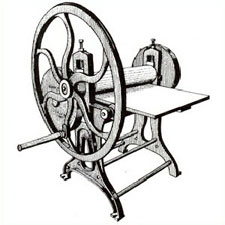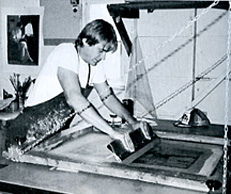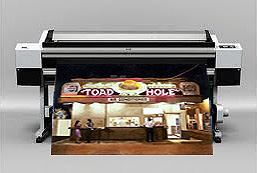JONATHAN OWEN FINE ART
Home | About Jonathan | About the Prints | Contact.
Watercolours & Prints | Silkscreens | Etchings
Etchings, Silkscreens, Offset Lithographs and Giclées
 |
PURE ETCHING is a hand-made process. A metal (usually copper, zinc or steel) plate is covered with a waxy ground which is resistant to acid. The artist then scratches off the ground with a pointed etching needle, or other tool, where he wants a line to appear in the finished piece, so exposing the bare metal. The plate is then dipped in a bath of acid. The acid "bites" into the metal, where it is exposed, leaving behind lines sunk into the plate. The remaining ground is then cleaned off the plate. The plate is inked all over, and then the ink wiped off the surface, leaving only the ink in the etched lines. The plate is then put through a high-pressure printing press together with a sheet of paper moistened to soften it.The paper picks up the ink from the etched lines, making a print. The inking and printing process is repeated for each print required. The etching work on the plate can also be added to, or enhanced by combining it with other intaglio techniques such as engraving , aquatint or mezzotint. Editions are hand printed and kept small in size. Plates wear out and cannot be used indefinitely. The etchings here were printed whilst Jonathan was a student at the Royal College of Art on the one ton etching press built for the Great Exhibition in 1851. |
 |
ORIGINAL SCREENPRINTING is a handmade process. Silkscreen printing is a stencil and squeegee method of print making. A screen is made of a piece of fine mesh ( formerely silk, now polyester) stretched over a frame. A negative stencil is formed by blocking off parts of the screen. Whatever is left open will print. Stencils can be made in many different ways-hand painted directly on the screen, hand cut stencils that adhere to the screen and photograhic emulsion stencils are examples. A single sheet of paper is placed in position under the screen. Ink is applied at the top of the screen and pulled across with a squeegee, and is forced through the open spaces of the design. Each subsequent sheet of paper must be put down in exactly the same place on the table to achieve an accurate register and the process is repeated for each print required. A new screen is needed for each colour printed. Some of Jonathan's prints have up to 50 colour runs. Editions are hand printed and kept small in size. Stencils are erased after use, so the prints can not be re-run. Screenprints ,silkscreens, and serigraphs are all essentially the same thing,. The word "serigraph" was formulated to make the distinction between the artistic application of screen printing and the industrial use of the process. |
 |
OFFSET LITHOGRAPHY, for reproducing artworks, is a photo-mechanical process using industrial presses. Four photographic printing plates are made, one for each of the colours yellow, magenta, cyan and black and then printed on a commercial press. Offset printing produces faithful, sharp and clean images and is best suited for producing large volumes of high quality prints, rather than short runs. The Offset Lithographs here were printed at the prestigious Overland Press in Los Angeles under the watchful eye of Jonathan and Master Printer, Larry Janisse. |
 |
GICLÉE PRINTS are a fine art quality, digital photographic process. Giclée printers are essentially high-end inkjet printers that can print at a high resolution using special artist's quality pigmented inks rather than regular dye based inks. Special archival papers are also used.Together these give rich colour and long, archival life. One great advantage of Giclée prints is they don't have to be editioned all in one go, as with commercial, offset lithographs. They can be printed in small batches up to the last edition number, as needed. The high "up-front" cost of mass production for a full edition , therefore, is eliminated. However, the per unit cost of a Giclee print is higher than that of an offset lithograph because of the materials used.
|
As with other original artworks, prints should be framed behind glass and hung away from direct sunlight.
© Jonathan Owen 2012